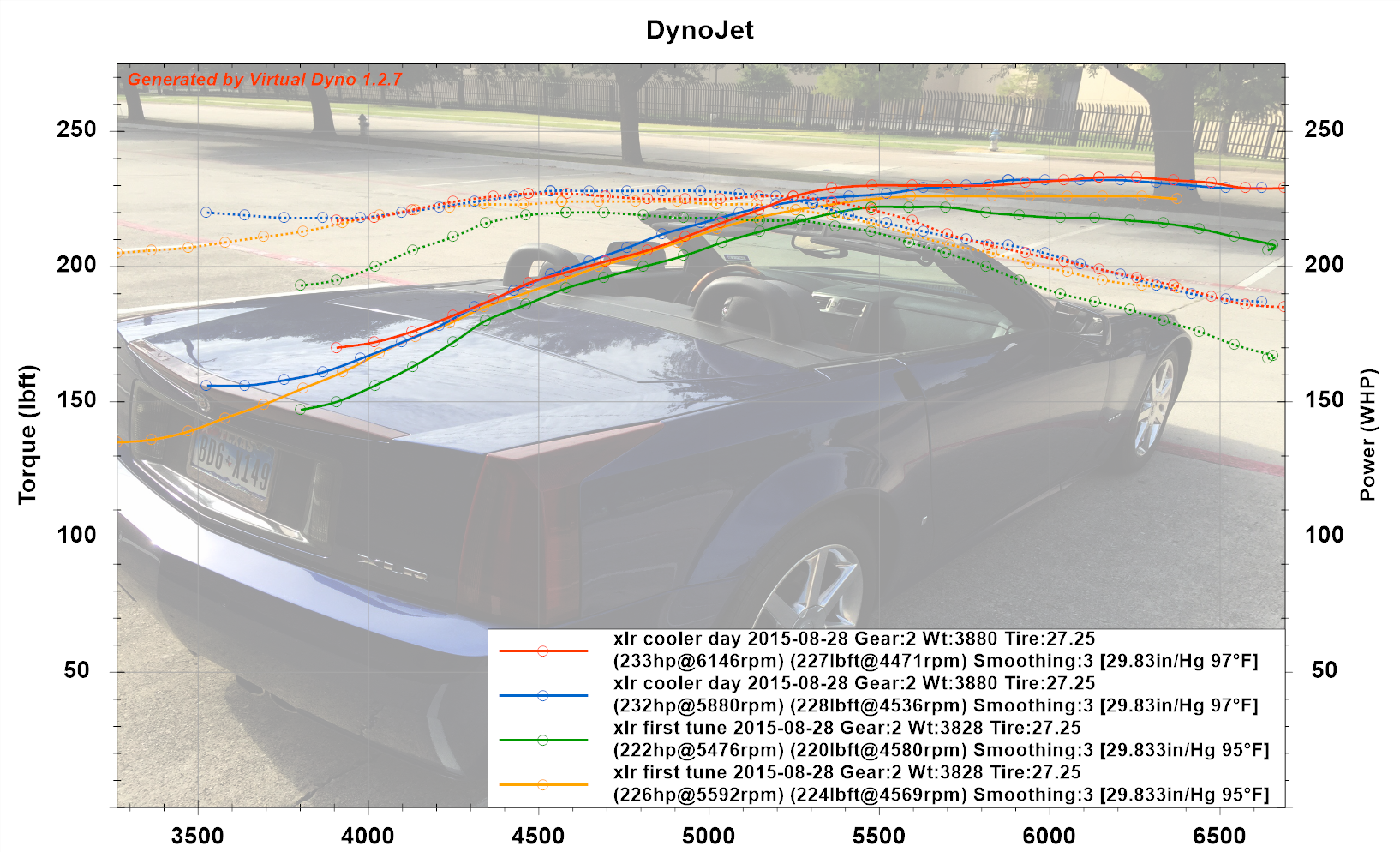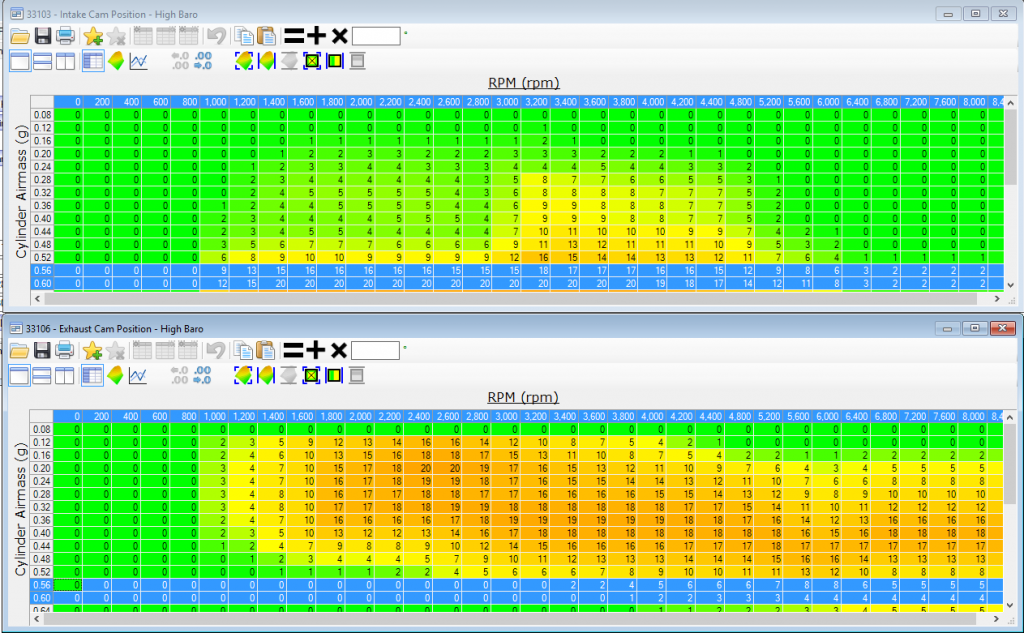Bwnunnally
Member
I am starting to experiment with basic tuning for the LH2 V8 engine in my "new" 2007 XLR using data captured from hptuners and Brad Barnhill's Virtual Dyno. Unfortunately due to lack of a handy runway I am doing my Virtual Dyno runs in 2nd gear, so not directly comparable with a chassis dyno that is usually done in the gear closest to 1:1. Appears however to be fairly consistent and repeatable.

First, I wanted to adjust the tune to recognize that we have E10, or gas with up to 10% ethanol. This gas has a lower stoichemic makeup, and an ideal ratio is 14.2:1 air:fuel instead of non-alcoholic gas at 14.7:1 air:fuel. The Cadillac factory tune assumes 14.7:1 fuel. I set the tune to 14.4:1 since we have an uncertain mix of alcohol in the fuel.
[Short version: lost power, on to next test]
Read More:Initial Tuning Steps Cadillac LH2 V8 Engine

First, I wanted to adjust the tune to recognize that we have E10, or gas with up to 10% ethanol. This gas has a lower stoichemic makeup, and an ideal ratio is 14.2:1 air:fuel instead of non-alcoholic gas at 14.7:1 air:fuel. The Cadillac factory tune assumes 14.7:1 fuel. I set the tune to 14.4:1 since we have an uncertain mix of alcohol in the fuel.
[Short version: lost power, on to next test]
Read More:Initial Tuning Steps Cadillac LH2 V8 Engine





